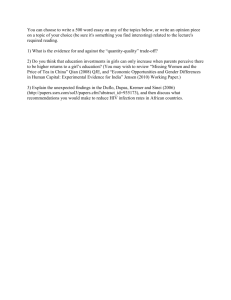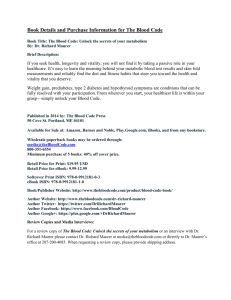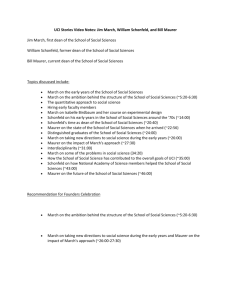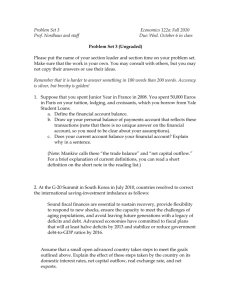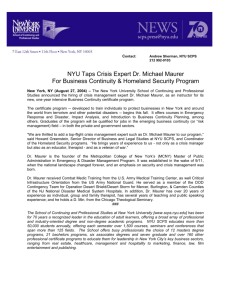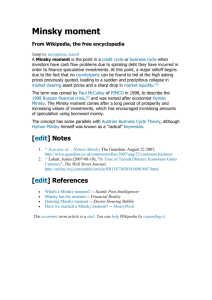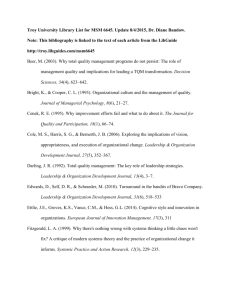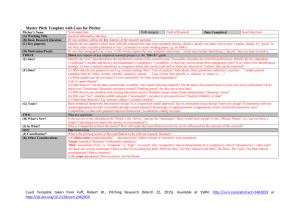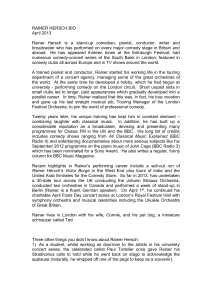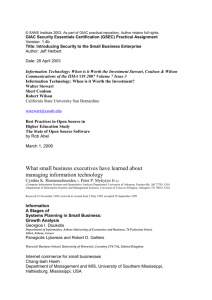Syllabus - Rainer Maurer
advertisement
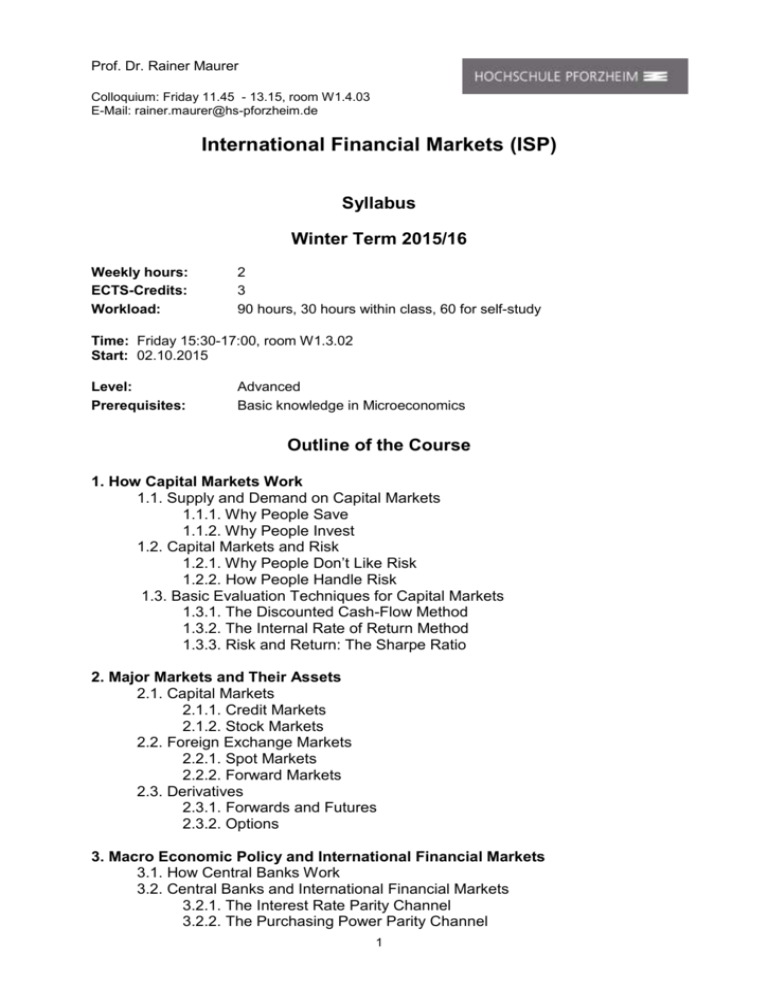
Prof. Dr. Rainer Maurer Colloquium: Friday 11.45 - 13.15, room W1.4.03 E-Mail: rainer.maurer@hs-pforzheim.de International Financial Markets (ISP) Syllabus Winter Term 2015/16 Weekly hours: ECTS-Credits: Workload: 2 3 90 hours, 30 hours within class, 60 for self-study Time: Friday 15:30-17:00, room W1.3.02 Start: 02.10.2015 Level: Prerequisites: Advanced Basic knowledge in Microeconomics Outline of the Course 1. How Capital Markets Work 1.1. Supply and Demand on Capital Markets 1.1.1. Why People Save 1.1.2. Why People Invest 1.2. Capital Markets and Risk 1.2.1. Why People Don’t Like Risk 1.2.2. How People Handle Risk 1.3. Basic Evaluation Techniques for Capital Markets 1.3.1. The Discounted Cash-Flow Method 1.3.2. The Internal Rate of Return Method 1.3.3. Risk and Return: The Sharpe Ratio 2. Major Markets and Their Assets 2.1. Capital Markets 2.1.1. Credit Markets 2.1.2. Stock Markets 2.2. Foreign Exchange Markets 2.2.1. Spot Markets 2.2.2. Forward Markets 2.3. Derivatives 2.3.1. Forwards and Futures 2.3.2. Options 3. Macro Economic Policy and International Financial Markets 3.1. How Central Banks Work 3.2. Central Banks and International Financial Markets 3.2.1. The Interest Rate Parity Channel 3.2.2. The Purchasing Power Parity Channel 1 4. Financial Market Crises 4.1. The Ingredients of a Financial Market Crisis 4.2. Lessons from History 4.2.1. The Dutch Tulip Crisis 1636-37 4.2.2. The World Economic Crisis of 1929 4.2.3. The Dot-com Crisis 2000 4.2.4. The Subprime Crisis 2007-09 Course Materials: Lecture Notes: http://www.rainer-maurer.com/pageID_9427996.html Basic textbooks: Mankiw, N.G., Principles of Economics, (Chapter 4, 18, 25) Mankiw, N.G., Macroeconomics, (Chapter 7) Fell, Lindsay: Financial Products and Markets, (Chapter 3, 4, 5, 6, 7, 8) Kohn, Meir (1994): Financial Institutions and Markets, (Chapter 17, 18, 19, 21 25, 26) Additional literature: Feldstein, M., (2002), Economic and Financial Crises in Emerging Market Economies: Overview of Prevention and Management, NBER Working Paper 8837 Kindleberger Charles, Robert Aliber, (2005), Manias, Panics and Crashes, A History of Financial Market Crisis Minsky, Hyman, 1991, The Financial Instability Hypothesis, Bard College Working Paper, http://papers.ssrn.com/sol3/papers.cfm?abstract_id=161024. Minsky, Hyman, 1992, Financial Crisis: Systemic or Idiosyncratic, Bard College Working Paper, http://papers.ssrn.com/sol3/papers.cfm?abstract_id=161024 Rogoff, K. and Carmen Meinhardt, (2008), This Time is Different: A Panoramic View of Eight Centuries of Financial Crisis. Havard University Working Paper, www.economics.harvard.edu/faculty/rogoff/files/This_Time_Is_Different.pdf Course Topics: Enable students to analyze the nature, and functions of the financial system. evaluate the role of financial markets as they serve the needs of economic units, both domestically and globally. analyze the role of central banks and international financial institutions with respect to financial markets use the language and terminology appropriate to financial markets. 2 use basic financial mathematics applied to the pricing of financial market instruments. assess the operations on the foreign exchange market evaluate the main features of security, equity and derivative markets understand the causes and consequences of financial market crisis Teaching and Learning Approach: Lecture notes and additional material is available on my homepage www.rainer-mauer.de in form of Powerpoint presentations and PDFs. Print the PDFs and complete them during the lectures. The Powerpoint presentation can be used to repeat the subject matter of the lecture on your PC. Grading: The grading will be based upon a 60 minutes written exam at the end of the semester. To pass, 50% of the points out of a maximum of 60 points has to be reached. Written examination examples with sample solutions are available on my internet site: http://www.rainer-maurer.com/pageID_9427996.html Responsible: Rainer Maurer 3
